Introduction
The red-banded hairstreak, Calycopis cecrops (Fabricius), is a very attractive butterfly and one of our most common hairstreaks throughout the southeastern United States in dry open woods and wooded neighborhoods.
Distribution
The red-banded hairstreak is found from Maryland to southeast Kansas to eastern Texas and throughout Florida. As a stray, it is occasionally found as far north as southern Wisconsin and Minnesota.
Description
Adults
The wingspread of the adult is 24 to 30 mm (15/16–1 3/16 inches) (Opler and Malikul 1998). The under surface of the wings is gray-brown with a postmedial white line edged with a bright orange to red-orange band. Each hind wing has two tails (hairstreaks) with a relatively large conspicuous eyespot on the wing margin between the bases of the tails (Figure 1). Some spring specimens are darker in color (Field 1967) (Figure 2).
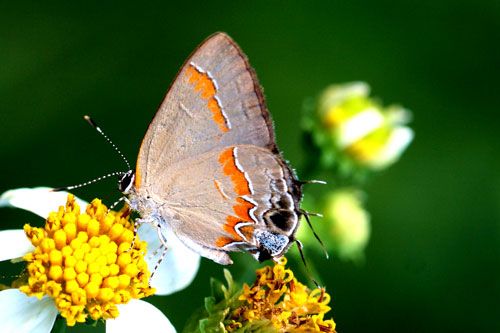
Credit: Donald W. Hall, UF/IFAS
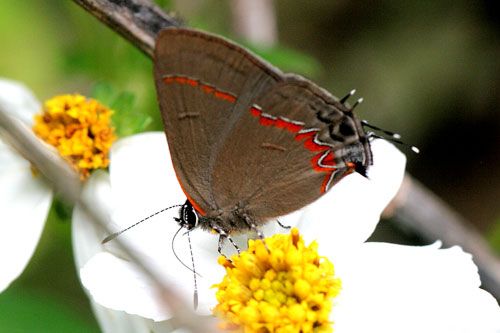
Credit: Donald W. Hall, UF/IFAS
Eggs
Eggs are dimpled white turning to tan as hatching approaches (Figure 3).
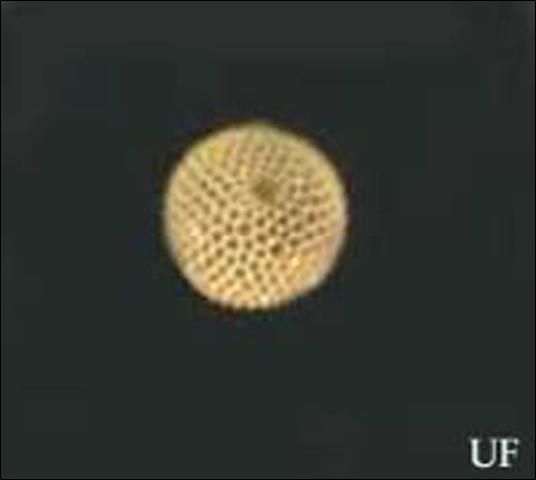
Credit: Jerry F. Butler, UF/IFAS
Larvae
Full-grown larvae are up to 0.6 inches in length (Minno et al. 2005) and are brown with a median dorsal longitudinal stripe and covered with a coat of short hairs. Spiracles are conspicuous as dark submarginal spots on the prothorax and abdominal segments one through eight (Figure 4). Detailed descriptions of all instars are given by Rawson et al. (1951).
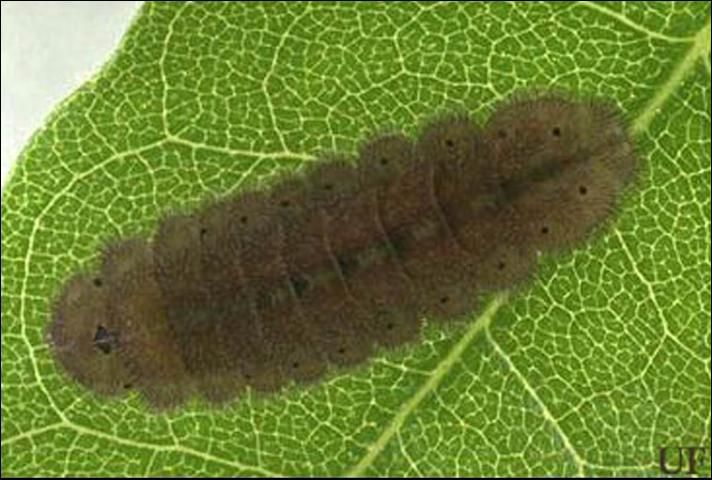
Credit: Jerry F. Butler, UF/IFAS
Pupae
Pupae are hairy and are light brown mottled with darker brown or black (Figure 5).
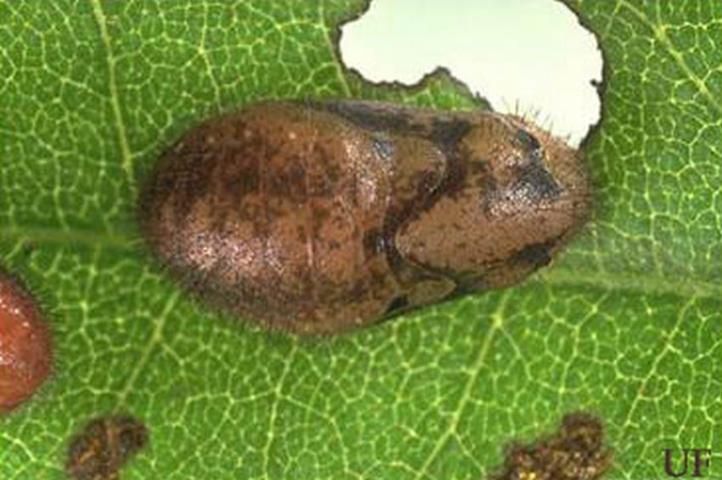
Credit: Jerry F. Butler, UF/IFAS
Life Cycle
There are several flights (May–October) in the northern part of the range and year-round in Florida (Scott 1986). Cech & Tudor (2005) stated that fourth instar larvae overwinter, but according to Opler & Krizek (1984) either larvae or pupae overwinter.
As with the other hairstreak butterflies, perching adults move their hind wings up and down (Sourakov 2017). The tails on the hind wings with their associated eyespots resemble a head. The movement of the tails is believed to attract a potential predator's attention to that part of the wings which then is torn away allowing the butterfly to escape. This "false head" defense has been documented to be effective against the attacks of jumping spiders (Sourakov 2013).
Eggs are laid on the undersides of dead leaves on the ground beneath the host plants. Larvae are reported to feed on dead leaves and detritus in the leaf litter (Minno et al. 2005; Opler & Malikul 1998).
Males perch on vegetation to await the arrival of females for mating. Adults feed on nectar and sip from mud.
Host Plants
In the laboratory, larvae have been reared on bayberries (Myrica spp.) (Figures 6) and sumacs (Rhus spp.) (Figure 7) (Gifford & Opler 1983; D.W. Hall personal observation; Rawson et al. 1951).
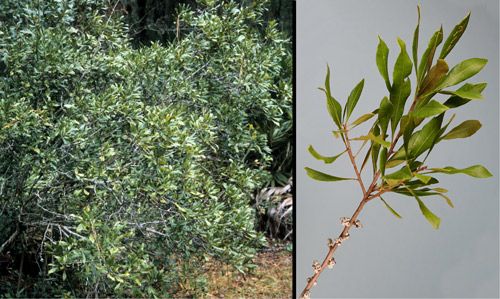
Credit: Donald W. Hall, UF/IFAS
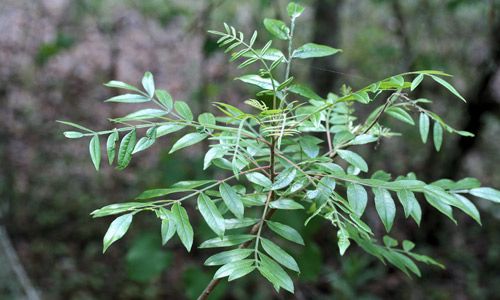
Credit: Donald W. Hall, UF/IFAS
Selected References
Cech R., Tudor G. 2005. Butterflies of the East Coast: An Observer's Guide. Princton, NJ: Princeton University Press
Field W. D. 1967. "Preliminary revision of butterflies of the genus Calycopis Scudder (Lycaenidae: Theclinae)." Proceedings of the United States National Museum 119: 1–48.
Gifford S. M. Opler P. A. 1983. "Natural history of seven hairstreaks in coastal North Carolina." Journal of the Lepidopterists' Society 37: 97–105.
Minno M. C., Butler J. F., Hall D. W. 2005. Florida Butterfly Caterpillars and their Host Plants. Gainesville, FL: University Press of Florida.
Opler P. A., Krizek G. O. 1984. Butterflies East of the Great Plains. Baltimore, MD: The Johns Hopkins University Press.
Opler P. A., Malikul V. 1998. Eastern Butterflies. Peterson Field Guide Series. New York: Houghton Mifflin Company.
Rawson G. W., Hill M. H., Hessel S. A. 1951. The life history of Strymon cecrops Fabricius (Lepidoptera, Lycaenidae). Bulletin of the Brooklyn Entomological Society 46: 79–84.
Scott J. A. 1986. The Butterflies of North America. Stanford, CA: Stanford University Press.
Sourakov A. 2013. "Two heads are better than one: false head allows Calycopis cecrops (Lycaenidae) to escape predation by a jumping spider, Phidippus pulcherrimus (Salticidae)." Journal of Natural History 47:15–16, 1047–1054. (December 2019)
Sourakov A. 2017. Great Purple Hairstreak Atlides halesus (Lycaenidae: Theclinae) feeds on goldenrod at UF Natural Area Teaching Laboratory (NATL). (https://www.youtube.com/watch?v=b_JEera6FKE) (December 2019)